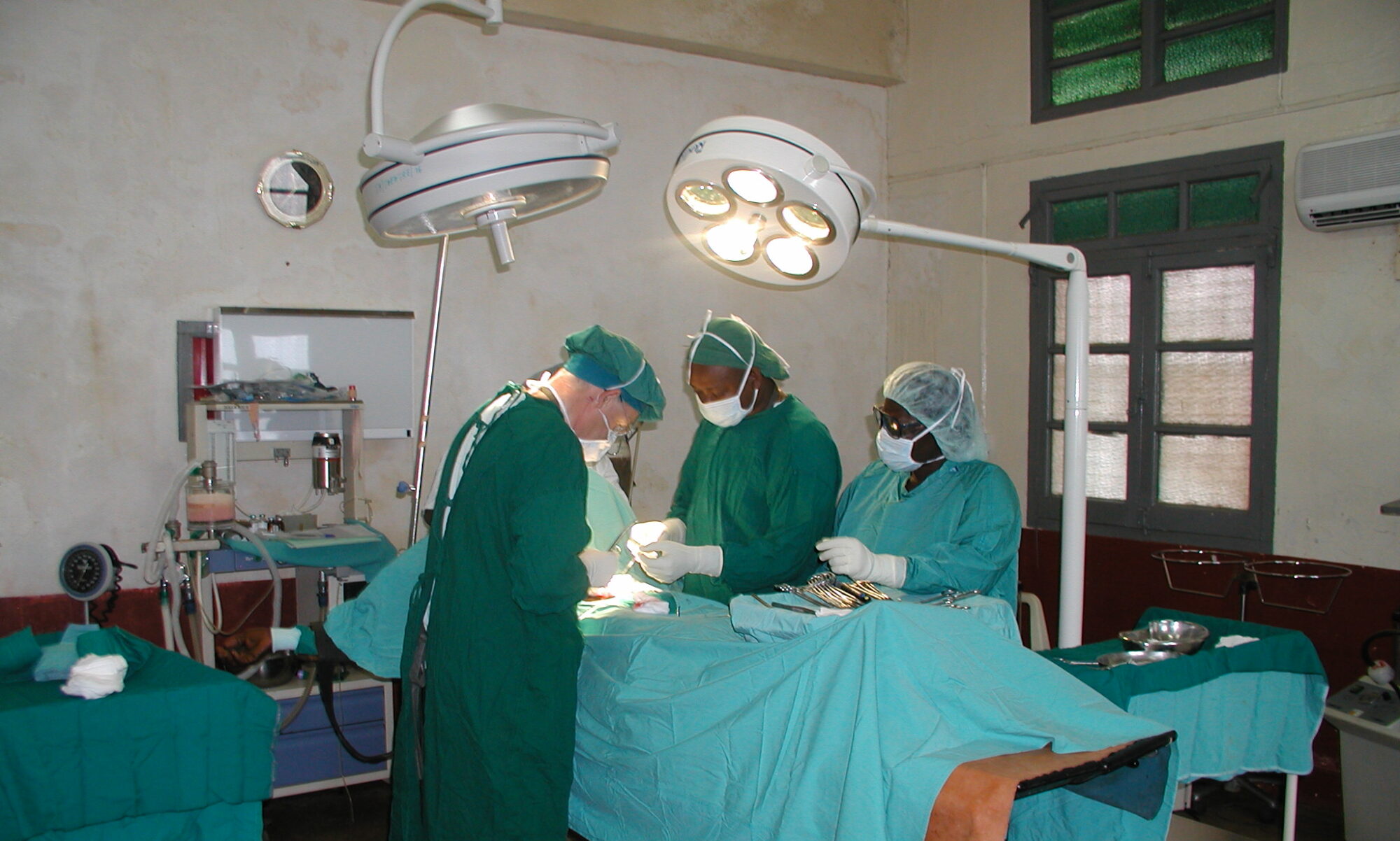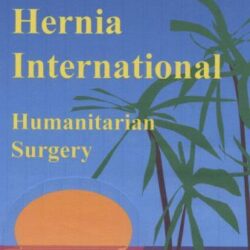HOLY INNOCENT HOSPITAL (HIH) CAMPAIGN, KAMUTUR, UGANDA 17-27 MARCH
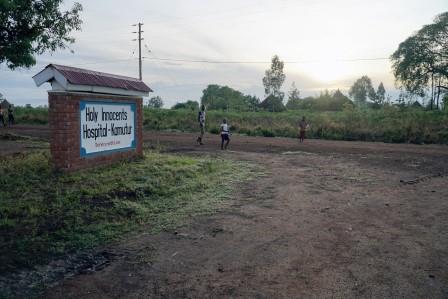
The Kamutur campaign is a regular location for humanitarian surgical cooperation within the agreements of Hernia International, Surgeons in Action and the Holy Innocents Hospital (hereafter HIH) located there for years. It usually hosts an average of 2-3 campaigns per year and its local coordinator, Moses Asia, is a person highly regarded by our organisations for his leadership capacity in the local community of Bukedea County, for his good work in the coordination of the campaigns and for his determination to build a health care space in a geographical area in Uganda with very difficult access to health care. In addition, Moses Asia enjoys the confidence of the regional and national health authorities in the country.
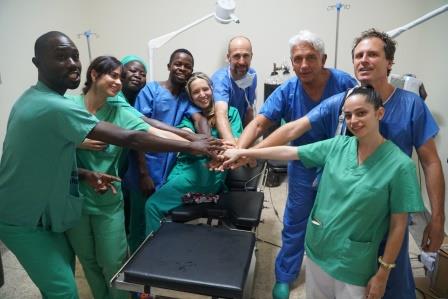
This campaign was organised from the end of 2022 and the objective was to be able to recruit a significant amount of surgical pathology focused on goitres, hernias of all types (including children), splenomegaly, minor general surgery and everything that could be susceptible to being safely treated surgically after its evaluation in consultation by our team. Moses Asia’s estimates, reflected in writing in our whatsapp conversations, were to recruit 68 large goitres, more than 100 hernias and hydroceles and other pathologies to be able to consider 200 cases for surgery.
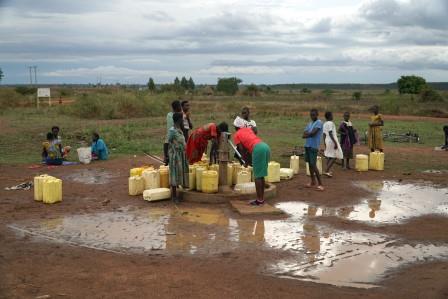
With this objective, the Surgeons in Action team was sized with three general surgeons (César Ramírez, team leader, Marta Roldón and Jorge Verdes), a 5th year resident in General and Digestive Surgery (Dr. Ainhoa Maestu), two anaesthesiologists (Javier Mora and Carlos Ávila) and three nurses (Francisco Gómez, Sara García and Leire Gascón) in order to work simultaneously on a minimum of two
operating tables and, if available, an additional third one). From my previous visit to HIH, I
already know that a minimum of two operating theatres can be used every day (only one of them has a ventilator) and there is a third table in another room that can be used to operate with spinal anaesthesia and minor surgery. Therefore, based on the estimates that Moses Asia had given us, a team capable of working on three operating theatres every day was put together. We were also accompanied by a volunteer journalist, Javier Budi, who made a visual documentary report of the work carried out.
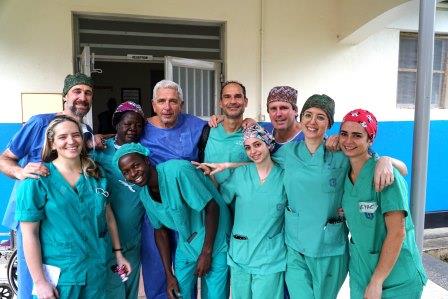
With these objectives in mind, the departure and arrival at Malaga airport was planned for 17 and 27 March 2023, respectively, with a healthcare activity schedule that included the assessment of patients in the outpatient clinic on the afternoon of 18 March in 2-3 physical spaces and the start of surgical activity on Sunday 19 March without interruption until Sunday 26 in the afternoon at 17:00 hours, thus allowing 7.5 full working days to be completed. The travel plan was as follows: Departure from Malaga on Friday 17/03 in the morning (12h local time), arrival in Istanbul (16h local time) for boarding transit to Entebbe and arrival in this city at the foot of Lake Victoria at 3h a.m. on 18/03, also Ugandan local time. Once in Entebbe, we were picked up by a bus that took us on the 7-hour journey of irregular and intermittent tarmac roads from Entebbe to Kamutur, where we arrived at 3pm Ugandan local time on the same day, 18 March. A member of Moses Asia’s administrative staff at HIHC was waiting for us at the airport.
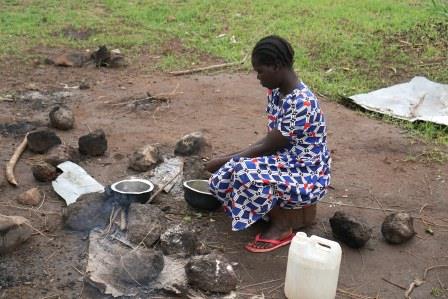
Compared to my visit just 3 years and 3 months ago to Kamutur on the campaign I coordinated in December 2019 (just pre-pandemic Covid) few things have changed at HIH. It still retains its rural and cosy feel, there is still no running water in the taps and no showers either, being necessary to use water drawn from an underground well every day and stored in vats of all kinds by HIH for daily washing and hygiene by dragging from the toilets, which drain into a septic tank. However, Moses has set up an enclosed shower area as a changing room so that daily washing does not have to be in the open air. The huts used for volunteer accommodation still have comfortable bunk beds, individual mosquito nets and a small towel was available each day, which was changed by the health
support community there. The resuscitation and post-surgical recovery ward attached to the surgical area that was started 3 years ago with the contribution of the Bisturí Solidario Foundation is only half built, as the arrival of the pandemic and the lack of funds have prevented its completion.
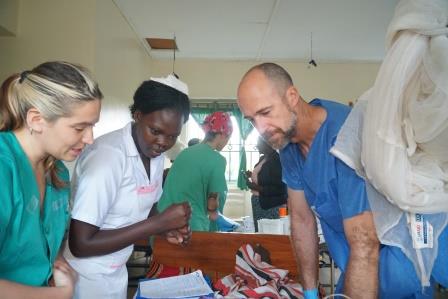
The availability of electricity in the operating theatre area continues to be a major handicap, as it is limited and dependent on sunlight, it frequently gives out and once the sun goes down it starts to fail quite a lot. The use of the anaesthesia machine for this reason is very limited, so that almost 90% of the surgeries, including those of giant goitres, have been performed with spontaneous ventilation (thanks to the great effort and support of the anaesthesiologists), leaving spinal anaesthesia for the rest of the pathologies.
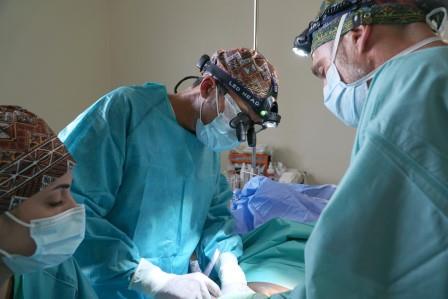
The total number of patients operated on in this campaign was 91, for a total of 102 surgical
procedures performed, and can be listed as follows: 41 cervical endocrine surgeries (21 unilateral subtotal thyroidectomies, 19 total thyroidectomies and one thyroglossal cyst), 15 hernia surgeries (10 inguinal hernia surgeries and 5 midline hernia surgeries), 2 hydrocele surgeries, one splenectomy for giant splenomegaly, 11 total hysterectomies with double anexectomy (for tumours or pelvic inflammatory disease), one gastrostomy for a patient with oesophageal cancer, one gastrostomy for a patient with oesophageal cancer, and one gastrostomy for a patient with oesophageal cancer, one feeding gastrostomy for a patient with oesophageal cancer in aphagia, one palliative colostomy for a patient with a locally advanced and stenosing rectal neoplasm (frozen pelvis), 10 proctological surgeries (fissures, haemorrhoids and tag-skins) and 9 patients with various procedures performed under local anaesthesia (keloids, lipomas and supernumerary fingers).
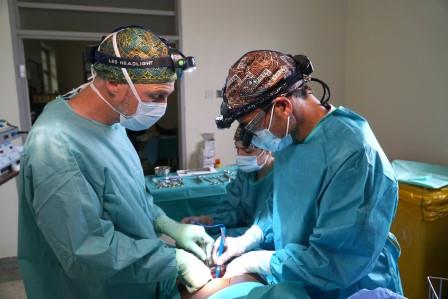
The evolution of the patients has been correct, with no perioperative mortality and only two reoperations after thyroid surgery (one for superficial haemostasis of the wound and the other for deep exploration due to evolving haematoma); in the follow-up, Moses Asia has informed us of 5 patients with superficial infection of the surgical site that we have helped to treat via whatsapp. All thyroidectomies were discharged the following day and no cases of hypocalcaemia were reported.
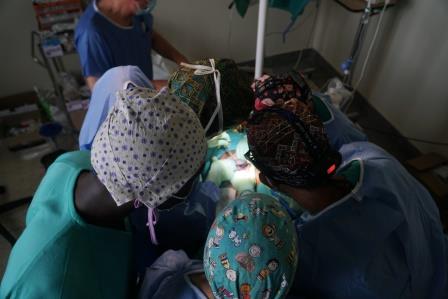
The collaboration of the operating theatre staff has been extraordinary, so that we have had three nurses and three cleaners who have been highly efficient in their performance and who have worked tirelessly every day. With the volume of surgical activity and the
complexity of post-surgical recovery of thyroidectomy patients, the nurses were unable to scrub with us during the surgeries, as they were always busy with patient transport, circulation cleaning of equipment and anaesthetic recovery.
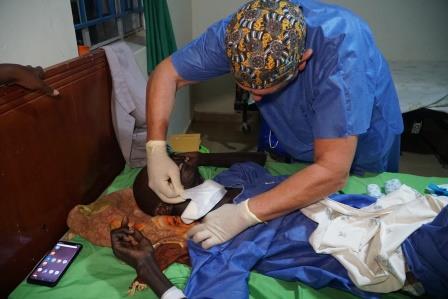
We would have loved it to be otherwise, but technically it was impossible. On the fourth day of our stay, we received a protocol visit from the county health authorities, who evaluated the functioning of the work circuits and gave a positive assessment. I myself explained everything about our activity, how we organised the campaign and what we were doing there, and the feedback was very good.
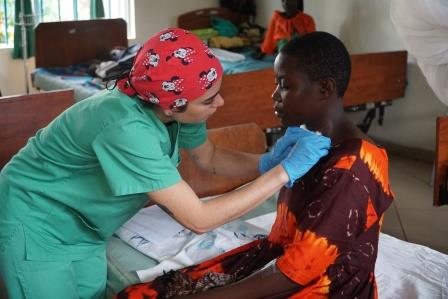
From Malaga, the team’s departure point, 21 packages have been transported to carry 430 kg of material, including a Ligasure donated by Medtronic that accompanies us every trip, more than 300 meshes and hundreds of sutures, of which more than 75% have returned to Spain with us (HIH is a medical centre where there is no routine surgical activity outside the cooperation campaigns and they were not going to be used there in the near future). Similarly, many surgical gowns, gloves, anaesthesia equipment and sterile drapes have returned with us.
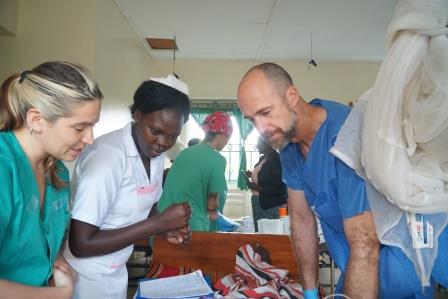
With the support of the Bidafarma Foundation, a total of 24,000 tablets of Levothyroxine 100 micrograms have also been transported, which will make it possible to supply the 19 women undergoing total thyroidectomy for more than 3
years. Due to the absence of surgical activity for the 7th and 8th days of our stay, and given that for the 6th day of surgery there was only activity for one operating theatre and for half of the team that day, some members of the expedition have brought forward our return trip by 72 hours and we have returned on Friday 24th March in the afternoon, and the rest of the team have spent the weekend in Entebbe doing activities in Lake Victoria and leisure, returning on the flight plan initially planned (on the 27th March in the afternoon). We all arrived without incident.
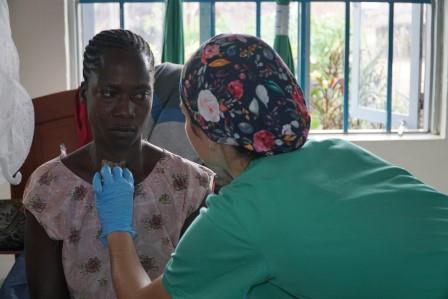
The expenses of the campaign can be summarised as follows: 7.000 Euros (airline tickets for the whole team); 2.300.000 Ugandan shillings (650 Euros) for the round trip transfers for the whole team and material; and 5.600.000 Ugandan shillings (1600 Euros) for the living and accommodation expenses of the whole team for 8 days. A total of 9.250 Euros, 50% of which was financed by the Fundación Bisturí Solidario, a partner of Cirujanos en Acción.
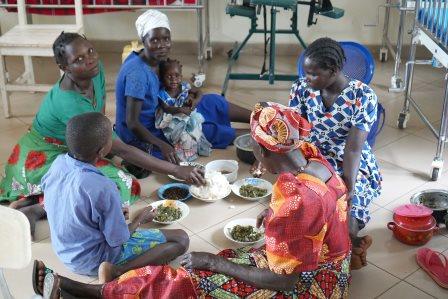
The food has been very good, being always products derived from nature (pineapple, potatoes, tomato, avocado and cabbage basically) and some chicken, liver and pasta on occasion. Throughout the whole time we had cold bottled drinks on demand (beer, water and carbonated drinks).
Holy Innocents Hospital is a very suitable place to carry out surgical cooperation campaigns, as its coordinator Moses Asia has extensive experience in this field. On this occasion, the patient recruitment process was not in line with the expectations that Kamutur had given us, which meant that 51.12% of the time we had set aside for surgery could not be carried out, a circumstance that can be very frustrating for the volunteers when it happens, and this was the reason why three members of the team brought forward their return trip by 72 hours. For my part I have sized a team to attend over 200 patients as proposed and knowing that there were 3 operating tables available; this means for 7.5 days of work the unique opportunity to have 24 morning and 21 full afternoon operating room sessions, of which a total of 22 sessions were actually covered (48.8% of the total
possible!).
I think that the fact that a Hernia International campaign was held only a mont
before may have conditioned the “n” of recruitment, so I think that campaign should not
be organised so closely together unless it is very clear that an adequat number of patients for the cooperating team is ensured; otherwise, it is not easy t explain that in a Hernia International campaign 15 hernias are operated on in almos a week. In the same way, and in order to be able to work better in the future, it is priority to fix the issue of electricity, because not all anaesthetists can have th ability and capacity to cope with such precarious working conditions, and this i something that all of us from abroad must help with and provide financial support The Bisturí Solidario Foundation is proposing to support HIH with 20,000 Euros ove the course of this year in order to complete the electrical installation that will finall improve the working conditions in the operating theatre, as well as to purchase new general anaesthesia machine that will allow at least two operating theatres t be 100% operational for all types of pathology.
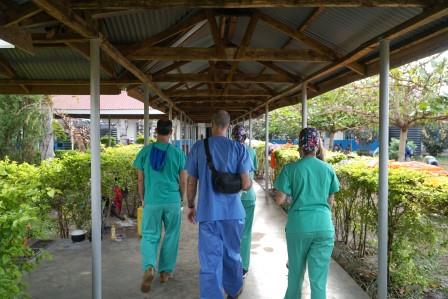
On the other hand, it would b desirable for the local HIHC coordination to improve the recruitment criteria an better adjust the expectations of patients to be faced in the cooperation campaigns in order to optimise the resources provided by the volunteers to the maximum.
My congratulations to the whole team, the campaign with this volume of work in days and a half has been a great success and almost 100 patients have benefite from surgeries, many of them complex and unusual in cooperation with excellen results, superimposable to those of our environment, which is the most importan and what motivates us. Thank you all and see you next campaign!
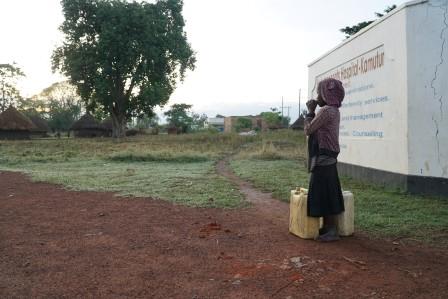
César Ramírez
